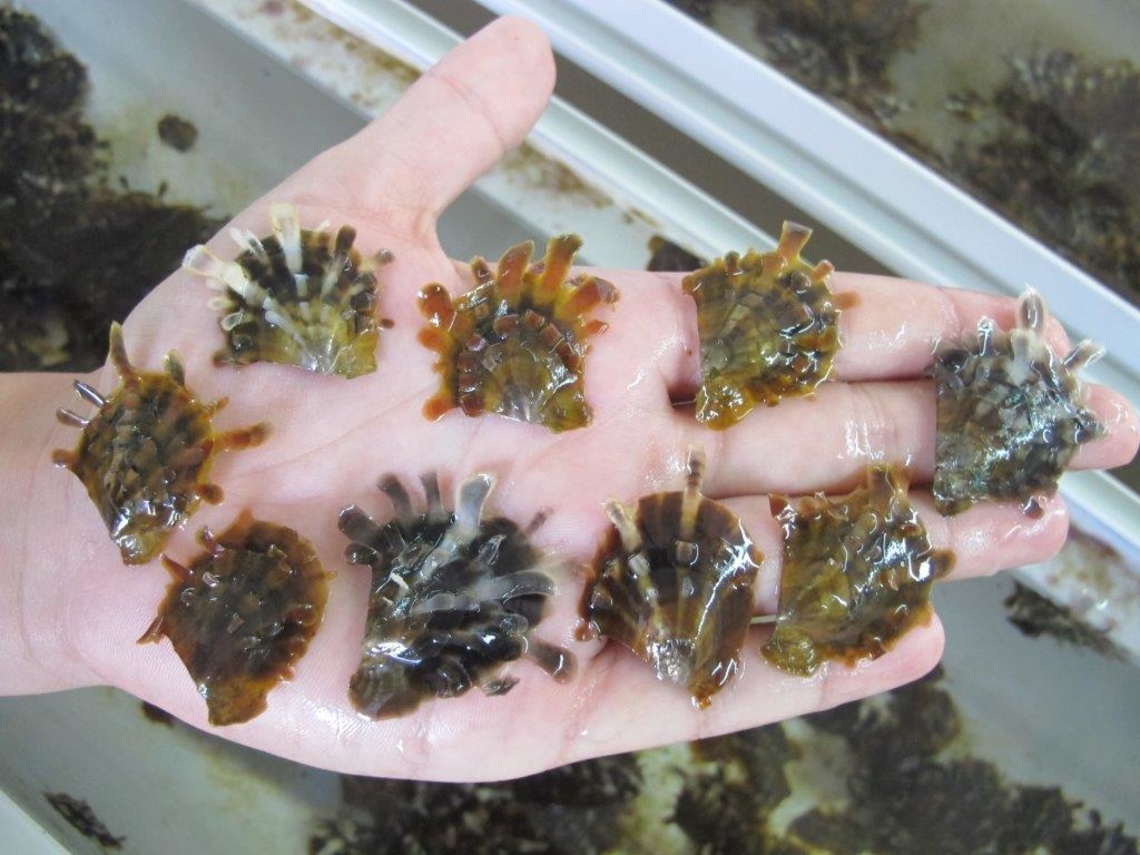Pearl farming process
Unlike fine pearls, cultured pearls produce a larger harvest. Cultivating pearls involves introducing an external element inside the oyster. This process requiring the hand of man will allow the oyster to protect itself by creating a layer of mother-of-pearl around the foreign body. The formation of the Tahitian pearl is formed in 5 steps:
1 – La ressource


2 – Spat collecting
During the spawning period of the oysters, collectors are installed in the lagoon to allow the male and female gametes to mix in order to give birth to larvae of nacres called spat. These collectors are pieces of black plastic attached to ropes. This makes it possible to capture the larvae of the mother-of-pearl so that they cling and grow.
Once the spat is collected, the removal operation begins. This involves removing the larvae (spat) from the collectors. The spat is then pierced and suspended by a nylon thread with strings called beads that will support 10 to 20 oysters. This thread allows to recreate the link that united the spat to its collector.
3 – Breeding
The rearing of Pinctada Margaritifera oysters requires optimal monitoring both for their health and for their protection against natural predators.
To promote their growth, regular and thorough cleaning is essential. Two to four times a year, the oysters are removed from the water to be thoroughly cleaned (high pressure cleaner). This work consists of removing all the shells, molluscs and algae that stick to them and that disturb the good development of the oyster.
It is only after three years that the oysters can be grafted.


4 – Grafting
To obtain a Tahitian cultured pearl, it is necessary to proceed to the grafting stage. This involves making a small incision in the pearl pocket to insert a graft and a nucleus.
graft: piece of mantle taken from a donor oyster
nucleus: ball from a piece of shell
Following the operation, a period of 45 days is required to determine whether there has been a release of the nucleus or the death of the oyster. If, on the contrary, the nucleus and the graft are accepted by the oyster carrier, the latter will produce for 24 months a layer of mother-of-pearl to protect itself. The mother-of-pearl must reach a minimum thickness of 0.8 mm before it can be marketed.
5 – Harvesting
After two long years, the pearl farmers take out the oysters carrying the water and again call on the grafters to harvest the pearls.
Once the oysters are cleaned, the grafter makes a second incision to take out the pearl or the Keshi (pearl without core). If the mother oyster is healthy and the grafter judges the quality of the harvested pearls satisfactory, the oyster is grafted again (surgraft) with a nucleus of the same size.
If the pearl is not satisfactory, the process is stopped and the mother-of-pearl will be used in handicrafts or in the design of decorative object etc.
Once harvested, the pearls and keshis are rinsed and then put into a drum to clean and shine.



 No products in the cart.
No products in the cart.